The second most watched sport in the world takes students from public schools to the Brazilian national team
Learn more about cricket, a sport that transforms the lives of young people in the city of Poços de Caldas (MG) and has already led athletes to the Brazilian national team. The initiative has already trained more than 5,000 athletes and promotes access to young people between 16 and 18 years old from more than 50 municipal and state schools.
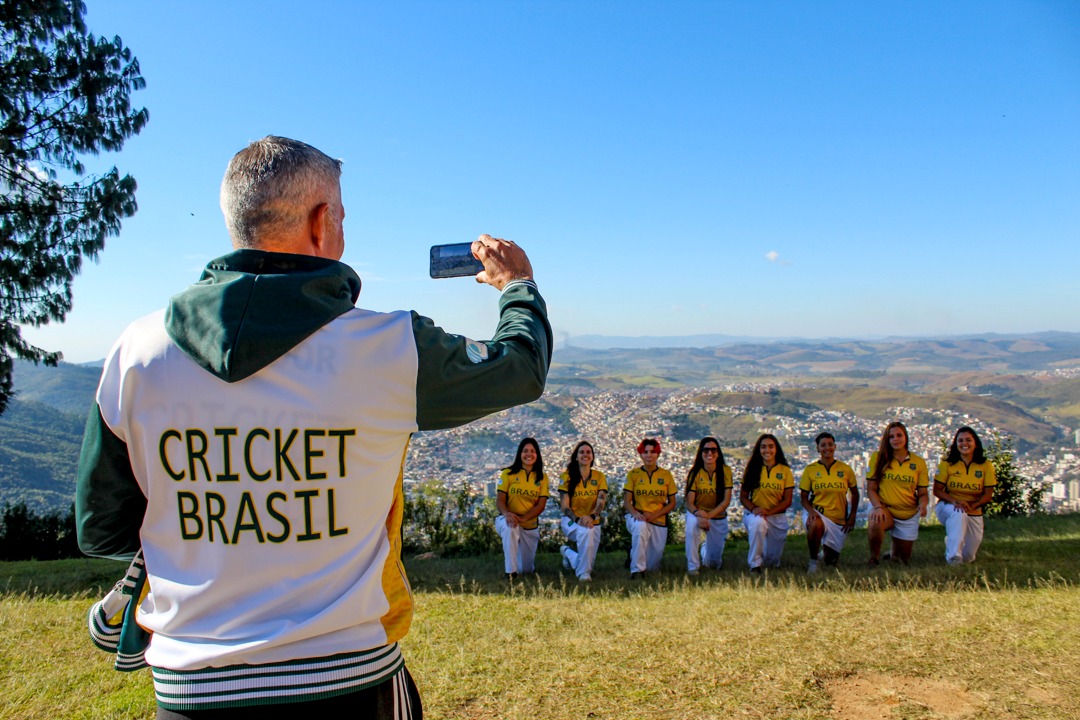

Image credit: Cricket Brasil
By: Gabriel Murga / Lupa do Bem – Favela em Pauta
Cricket, a sport practiced for more than 470 years with origins in the south of England, has found space for its recent development in Brazilian lands, although still far from the popularity of sports such as football and mixed martial arts, currently the most popular sports activities. impact and exposure in the country. However, the mining town of Poços de Caldas has its pioneering spirit in this practice that has transformed the lives of young people, even leading some to wear the shirt of the Brazilian team in the sport.
In 2011, a Brazilian of English origin and former professional athlete started a social project in the city located about 450 kilometers from the capital of Minas Gerais, Belo Horizonte, seeking to encourage the practice of cricket in Brazil. The UK, as well as India and Pakistan, are the countries where the sport is most popular. Worldwide, it is considered the second most watched sport, second only to football. In addition, cricket is expected to return to the Olympics program in 2028.
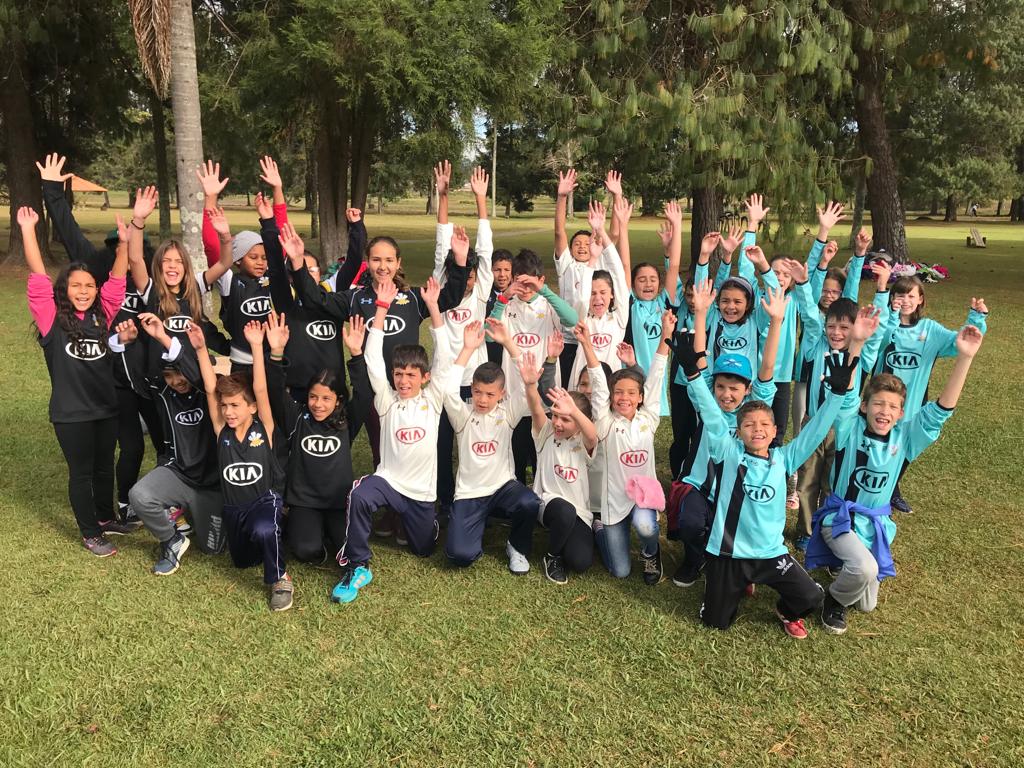
A decade later, the reality is almost five thousand children practicing the sport, of which about 60% are girls. With the advancement of the project by Matt Featherstone, representative of the International Committee on Sport, cricket is currently taught in more than 55 public, state and municipal schools for students aged between 16 and 18 years.
Ten athletes from the Brazilian women’s cricket team who will compete in the World Cup of the sport, in November this year in the United States, are from Poços de Caldas. Nine of these athletes had their first contact with the modality through sports activities in partnership with the public school system through the Sports Incentive Law and the project of the Cricket Brasil association. In the men’s team, there are two athletes representing the Brazilian team.
Interview with Roberta Moretti, captain of the Brazilian cricket team
We spoke with the captain of the Brazilian cricket team, Roberta Moretti, who is the coordinator of the Cricket Poços project, a physical education teacher and, of course, an athlete of the sport, about the power of the project for the country.


1) What is the impact of the project on the lives of teenagers and what is the expectation for the 2028 Olympic cycle?
The project is 100% developed in public schools here in the region, so they are usually schools that have a less favored sports structure than private schools and have fewer extracurricular activities and sometimes less access to materials. Cricket comes in as a different sport option from the four big sports that we have generally applied in Brazil: soccer, volleyball, basketball and handball.
In addition to being another sport offered in institutions, we are part of social projects that work after school hours. So, these are areas that have social vulnerability and children have access to cricket as an extracurricular activity, developing motor skills, where they will be developing greater socialization and gain all the benefits of the sport.
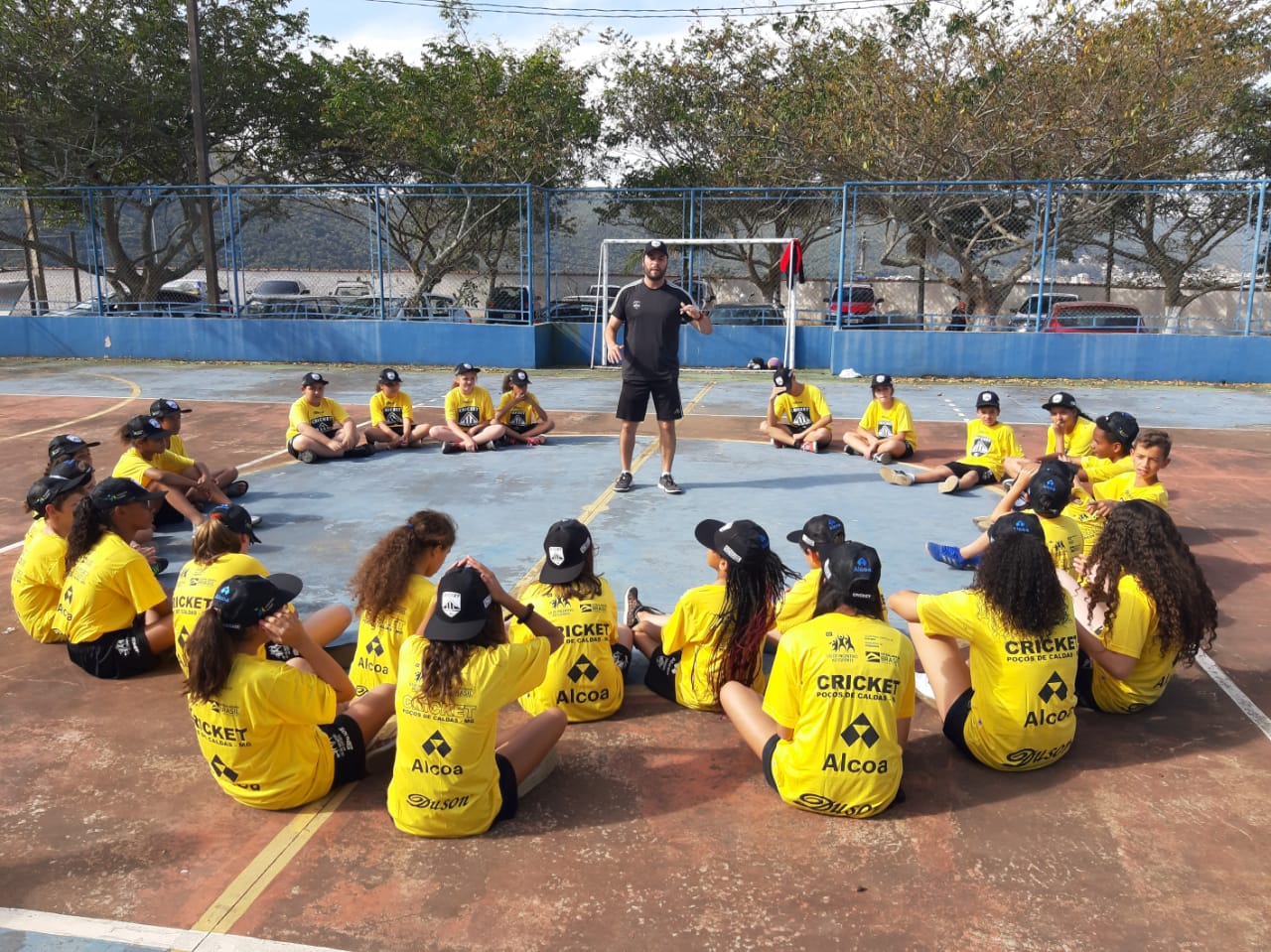

We are already working on the 2028 Olympic cycle – in Los Angeles. Although the format to be played remains undefined, we are already making investments here for the professionalization of the sport. In 2020, the Brazilian Women’s Team turned professional with 14 players signed and began the process of international competitions for the World Cricket Championship – ICC (International Cricket Council). And this year he starts participating in the World Cup qualifiers.
The men’s and women’s U-19 teams will be the next to become professional, and this will encourage the men’s and women’s adult national teams. So I believe that this path is very promising for cricket in Brazil and, for sure, when the 2028 and 2032 Olympic cycles arrive, we will be well prepared for that moment.
2) How important is the partnership between cricket and education bodies in Poços de Caldas?
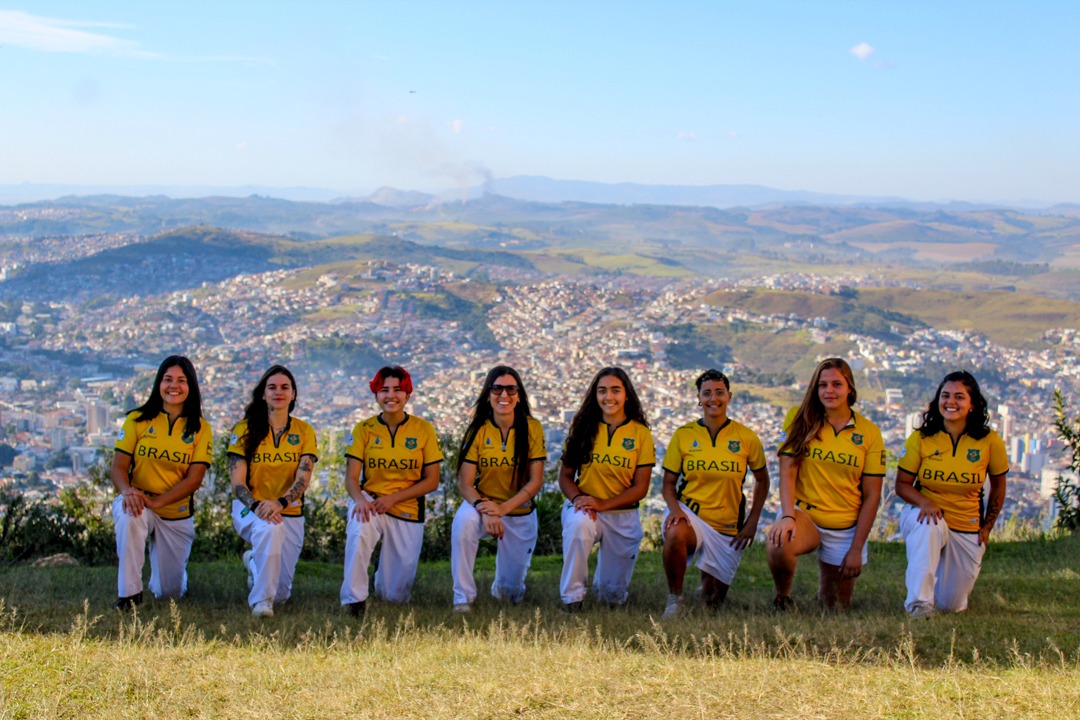

Here in Poços de Caldas, we are very lucky to have a lot of support from education bodies, companies, and people who support the Brazil cricket project. And this is the result of a very well-structured product. Anyone who knows the Cricket Poços project, from Cricket Brasil, sees first how much children loves it, how much teenagers loves it and how transparent it is.
So, we have credit with the people we work with: with the city halls; with the sports departments; with companies through Municipal and Federal incentive laws. And the project’s growth from 26 children in 2009/2010 to more than five thousand children accessing cricket weekly was supported by these companies.
The university project, which trains cricket teachers to increase the project annually, takes place with the support of the university and with the support of collaborating companies, so it would not be possible to have such sustainable growth without each of these.
3) Most of the athletes formed by the project are women, as well as the presence of city girls in the selection is greater. There is a difference from when the project was started, to now, concerning the issue of male chauvinism in sport?
In the projects today we have about 50% of the boys and 50% of the girls playing. When this number goes to high performance, I think that due to the opportunities that are happening today with the Brazilian women’s team being hired with a development team also already taking shape here, we see a very large number of high-performance girls. I believe there is an opportunity for other sports to have the same share.
Brazil is a sports country, it has an ideal climate for practicing sports and people here move around, people here are not sedentary when young. What I think happens in some sports is that the practice is very focused on boys, and then comes the issue of machismo in sports.
I graduated in physical education and did a graduate degree in sports. During these internships, it was not uncommon to see a 50-minute [sports] class turn into 40 minutes of soccer for boys and 10 minutes for girls, and often the incentive was differentiated by gender.
I even understand a little why there is a cultural tendency because every child plays and/or practices sports until they are 8, 9, 12 years old together, regardless of gender. When we reach the age of 13 and 14, boys develop biologically and become stronger and faster than girls, generally, and this makes educators need to ensure that all girls and boys are included in activities – not only those that have developed better.
The sport can and should be used as a means of education and personal development and this inclusion is an essential part of any well-structured sports project. Cricket does it very clearly and I believe it greatly influences the number of girls participating. Brazil was the first country to sign the Women’s Cricket Team before the men’s team in the world. This is a milestone that we are very proud of and that was only possible with a grassroots work of inclusion and respect for all genders.
4) What is your expectation for the World Cup dispute, this one in the United States. How are we prepared for this challenge?
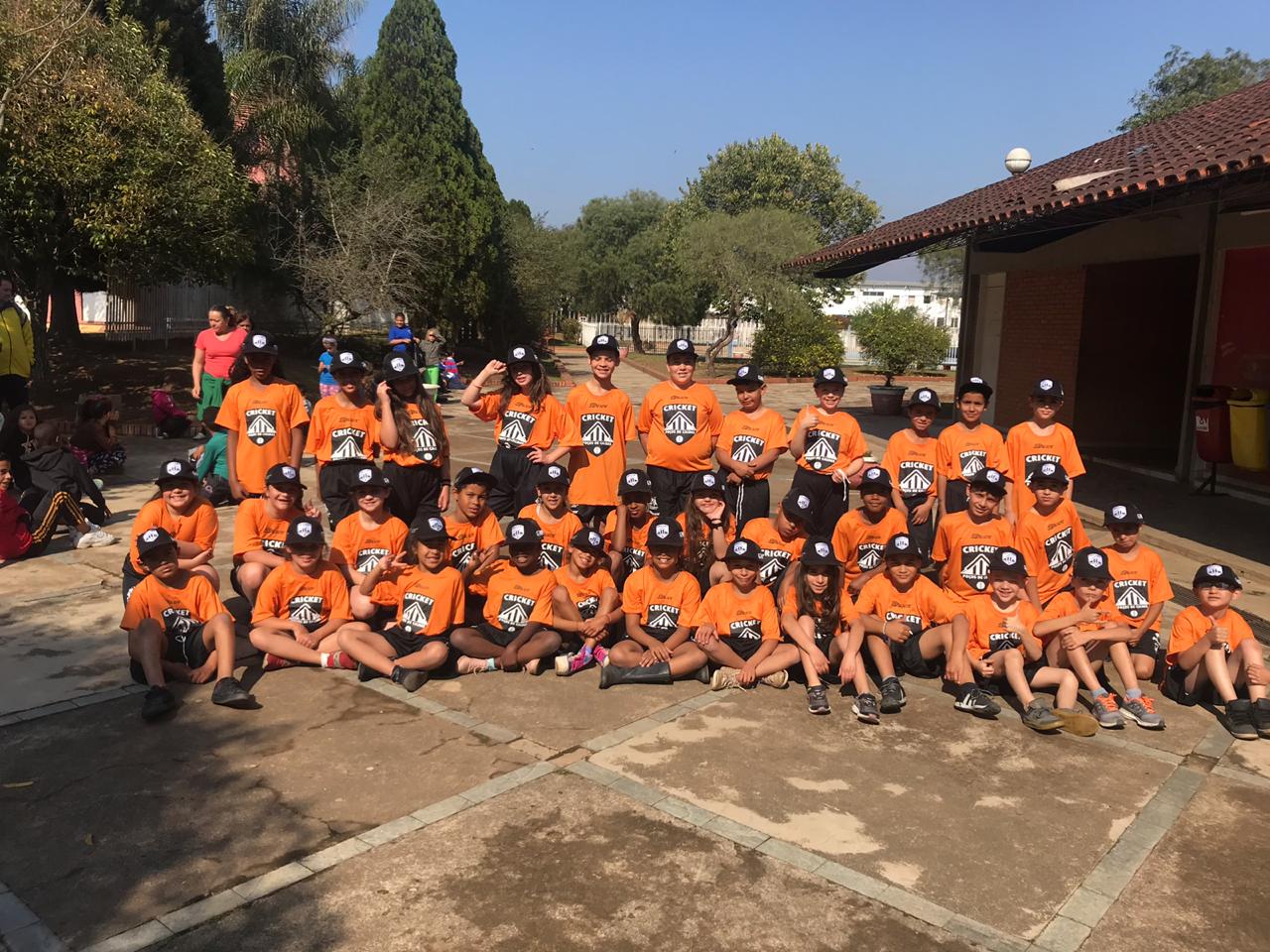

We are very happy to play the Qualifiers for the World Cup. This is a tournament that was postponed due to the pandemic, but that benefited us, as we had the opportunity to train for another year and prepare with more intensity.
Brazil has a very young team, but with a lot of talent, and a lot of determination. Cricket in Brazil is developing better and better and we are seeing new talents appearing every day and I am sure that when we go to play in the second half it will be very beautiful to see Brazil arriving there for the first time. And more importantly, we have a lot of potential to pass these stages and play the World Cup in a few years and it will open many doors for Brazil very shortly.
5) Can you define the impact of cricket on the lives of young people in Poços de Caldas? And how could the project be mirrored in other locations?
To answer this question, I will give an example: we have, in the project, a boy named Michel Assunção, who was born in one of the poorest areas of the city where we have a Cricket development project. He was a very fast boy and was very fond of sports and logically ended up doing very well with cricket and was part of the first under-13 team to make an international Cricket Brazil trip.
He comes from a region where people usually don’t leave the city, they don’t go to São Paulo, for example. Michel traveled, went to Argentina, competed and since then he has competed in the under-13 and under-17, always traveling. He went to Rio de Janeiro to play in the national championship, he went to Brasília. And it was a boy who left his neighborhood, got to know countries and got to know the country. Today, he is in the second year of physical education college, through the Cricket Brasil university project, and is training to be a physical education teacher to continue this work.
He is the first person in the family to go to college. Like Michel, there are other young people on the same path getting similar spaces due to the project. So for sure Cricket has a very cool influence on the lives of these young people and this will certainly be mirrored in other places. We have the project and we are just waiting for the pandemic to allow us, which is to extend the project to the state of São Paulo.
He is the first person in the family to go to college. Like Michel, there are other young people on the same path getting similar spaces due to the project. So for sure Cricket has a very cool influence on the lives of these young people and this will certainly be mirrored in other places. We have the project and we are just waiting for the pandemic allow us to extend the project to the state of São Paulo.


